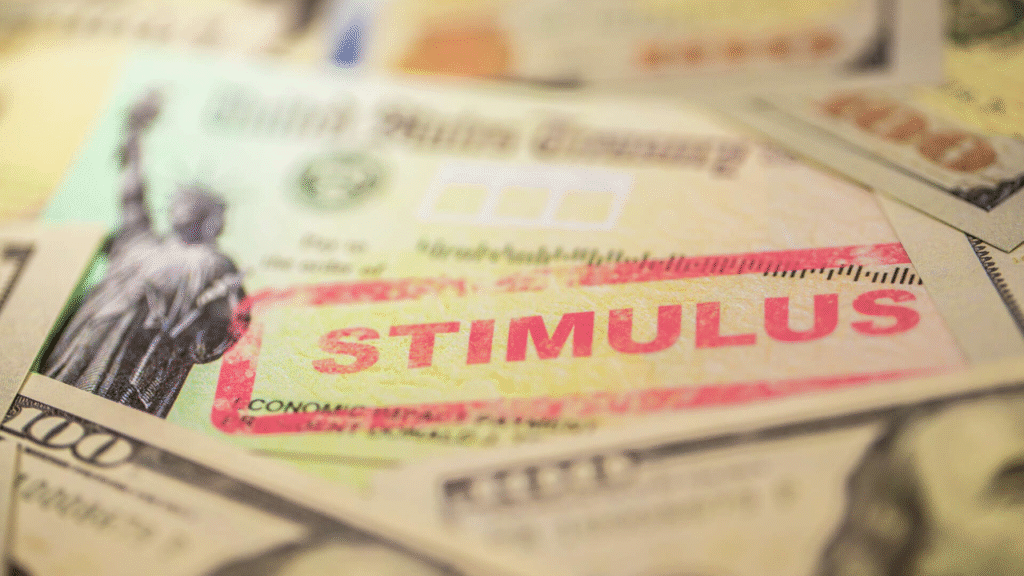The idea of DOGE stimulus checks has sparked a lot of conversation, with the potential to provide direct payments to federal taxpayers.
This proposal, which aims to offer up to USD 5,000 per household, has caught the attention of many, including prominent figures like Elon Musk and former President Donald Trump.
The plan is built on the idea that savings from the Department of Efficiency Governmental (DOGE) could be used to benefit citizens and help reduce the national debt. But while the concept has its appeal, turning these checks into a reality faces many challenges, both economic and legislative.
The proposal was initially put forward by James Fishback, the CEO of Azoria, who suggested that DOGE could save as much as USD 2,000 billion.
Under his plan, 20% of these savings could be distributed to approximately 80 million taxpayers, providing each household with stimulus checks of around USD 5,000.
The idea promises to bring much-needed financial relief to households across the country, but the journey from proposal to reality is not straightforward.
The Financial Hurdle
While the concept of receiving a USD 5,000 check per household is attractive, there are significant financial hurdles that must be overcome.
Currently, DOGE has managed to save USD 160 billion—an impressive figure, but still far from the USD 2,000 billion target that would be required for the plan to provide USD 5,000 to each taxpayer.
If the proposal were implemented today, the stimulus checks would be far less than anticipated, coming in at just USD 993 per household. This shortfall highlights the difficulty of reaching the necessary savings to fund the checks as originally envisioned.
Achieving the targeted savings is no small feat. Even with DOGE’s current success, the amount saved is still a fraction of what would be needed to implement the full proposal.
The government would need to find ways to significantly increase these savings to meet the requirements. While the potential for more savings exists, it would take time, strategic planning, and perhaps changes to how the Department of Efficiency Governmental operates.
Legislative Approval: The Crucial Step
Another major obstacle for the DOGE stimulus checks is gaining approval from Congress. No matter how well-received the idea may be among the public, it cannot move forward without legislative backing.
This is a critical step in the process, as Congress must approve the use of DOGE savings for direct payments to citizens. However, the proposal’s passage through Congress is far from guaranteed.
In order for the proposal to gain traction, it will need bipartisan support. Lawmakers from both sides of the aisle will need to come together to support the idea of using DOGE savings to fund the checks. Given the current political climate, this could be a difficult task.
Some lawmakers may be skeptical about the long-term impact of such a proposal, particularly regarding the national debt. The use of DOGE savings for direct payments raises concerns about fiscal responsibility and whether it could further strain the nation’s finances.
Opponents of the plan may argue that providing large-scale stimulus checks could fuel inflation or create economic instability.
They may also express concerns about the implications for the national debt. These are legitimate issues that lawmakers will need to address if the proposal is to move forward.
Proponents of the DOGE checks, on the other hand, will need to make a compelling case for why the initiative is worth pursuing and how it can benefit both citizens and the broader economy.
Strategic Advocacy and Building Support

Fishback and his team are not sitting idly by—they are actively working with legislators to push the proposal forward. This represents the first step in a potentially long and complex process. For the DOGE checks to become a reality, strong advocacy efforts will be essential.
The team behind the proposal will need to demonstrate the benefits of the checks and address any concerns lawmakers may have. Building a coalition of support within Congress will be crucial.
To make the idea more palatable to lawmakers, the proposal’s advocates will need to focus on its potential economic benefits.
The stimulus checks could provide a significant financial boost to households, particularly in a time when many Americans are struggling financially.
The checks could also stimulate consumer spending, which in turn could boost the economy. These benefits could help sway lawmakers who may be on the fence about the proposal.
The success of the DOGE checks will depend on how effectively Fishback and his team can rally support from lawmakers and the public.
A well-organized campaign that highlights the proposal’s benefits and addresses its potential risks could be key to winning over skeptics and advancing the plan.
The Potential Impact on the Economy
If the DOGE stimulus checks were to become a reality, they could have a significant impact on the economy. Proponents argue that the checks would provide much-needed financial relief to millions of households, helping to alleviate some of the financial strain many families are facing.
For lower- and middle-income households, the checks could be a lifeline, allowing them to pay bills, cover medical expenses, or invest in their futures.
Furthermore, the economic boost from the checks could lead to increased consumer spending, which in turn could stimulate business activity.
With more money in their pockets, consumers may be more likely to spend on goods and services, boosting demand and encouraging businesses to expand. This could create a positive feedback loop, with economic growth fueling further growth.
However, the proposal’s critics warn that the potential for inflation and the impact on the national debt must be carefully considered. Inflationary pressures could undermine the effectiveness of the checks, reducing their value over time.
Additionally, increasing the national debt could have long-term consequences that could harm the economy in the future. These are important concerns that must be addressed before the proposal can move forward.
The Road Ahead
In conclusion, the idea of DOGE stimulus checks offers an intriguing potential solution for providing financial relief to American households.
However, the proposal faces significant hurdles. The need to reach the required savings target, secure congressional approval, and address concerns about fiscal responsibility are all challenges that must be overcome.
The success of the DOGE checks will depend on the ability of advocates to build support and demonstrate the benefits of the initiative.
While the idea of receiving USD 5,000 checks is enticing, the path to making it a reality will require careful planning, negotiation, and compromise. The coming months will be critical in determining whether the DOGE checks can overcome these obstacles and provide much-needed relief to taxpayers across the country.



